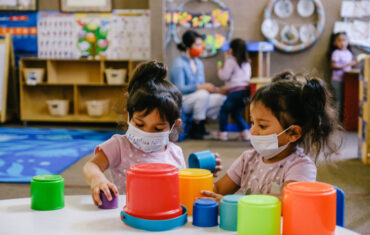As cases surge across the country, more than half of U.S. states require wearing face coverings while in public to help stop the spread of COVID-19. Another new protective trend? Face shields. Shields comprise an often curved plate of plastic that hovers over the face, held in place by an adjustable strap worn around the head. They range in style and design, from tinted plastic covers to baseball hats with a shield addition. But do you need a face shield? Are they more effective than masks? We’ve consulted medical experts to break down how face shields work and how to best shop for one.
How do face shields work?
Face shields basically involve curved plastic that protects your eyes or face from infection. Healthcare workers typically use them for certain procedures as is the case when a dentist performs a teeth cleaning, explains David McKnight, MD, a clinical professor in primary care and population health at Texas A&M University. Shields are also often used for safety in hardware and home improvement projects. They do not prevent spread of COVID-19, but can help reduce transmission. However, they can block large particulates from getting into your eyes and mouth, said McKnight.
Wearing a face shield may make you less likely to touch your face with unwashed and potentially contaminated hands, too. Typically, they are single use, but can sometimes be cleaned with plain soap and warm water and recycled for future use, said Joe Suyama, MD, chief of Emergency Medicine at UPMC Magee-Womens Hospital.
Should you get one?
People use face shields to get an additional layer of protection against COVID-19, along with wearing a face mask, practicing safe social distancing and washing your hands regularly. Shields do not replace face masks, as they do not fit to your face and effectively block respiratory droplets from the air around you, said Suyama. Experts agree they should be worn only with a face mask, not on their own.
“Most face shields do not cover the mouth and nose well enough to trap particles that wearers expel,” said Kathryn Jacobsen, a professor in global health epidemiology at George Mason University. “Face shields also usually do not have filters that reduce the risk of the user breathing in viral particles.”
For the record, the CDC does not recommend face shields for everyday activities as a substitute for cloth face coverings, as it’s unknown if they actually provide protection. A 2014 study in the Journal of Occupational and Environmental Hygiene did find they reduced exposure to inhaling cough droplets by up to 96 percent.
Besides, shields can be bulkier than masks, said McKnight, making it more uncomfortable for the wearer. Keep in mind that they also don’t meet the criteria for a face masks in all states, so you’ll need to check your local requirements before wearing one in public without a mask.
How to shop for the right face shields
Most face shields with plastic, though some materials can be more rigid than others, and some are more scratch-resistant. Shields that are more durable will last longer. Clarity is one of the most important aspects to look for — you want to be able to see through the shield, said McKnight. Many online retailers have pivoted to making shields in addition to masks. You may also be able to find shields in home improvement, hardware and medical supply stores, said McKnight.






